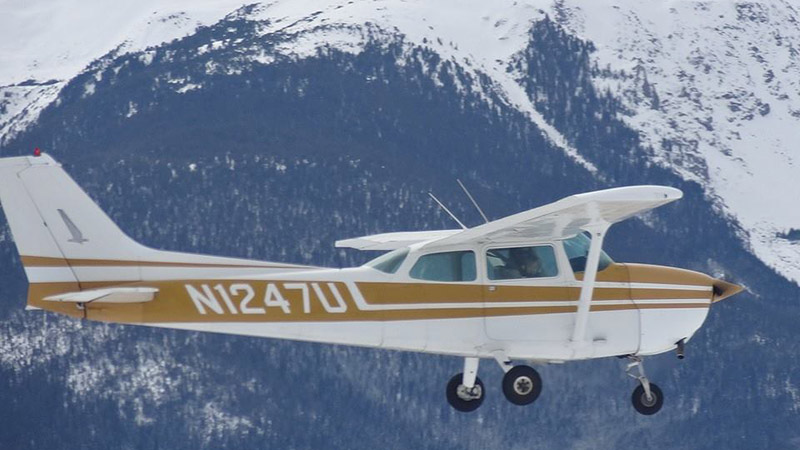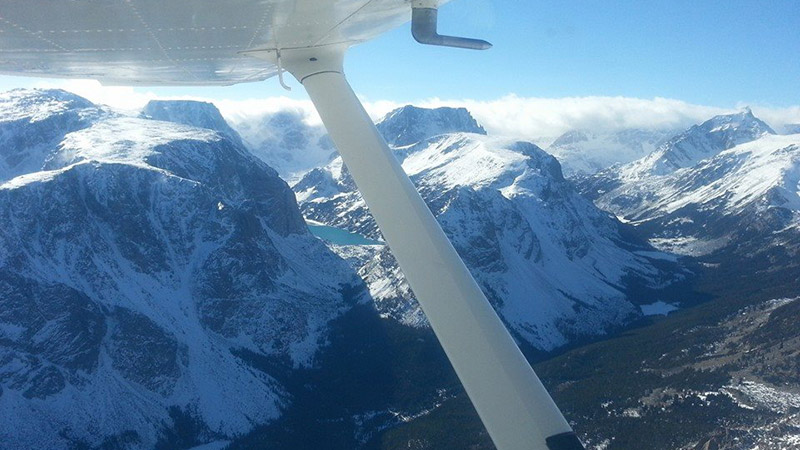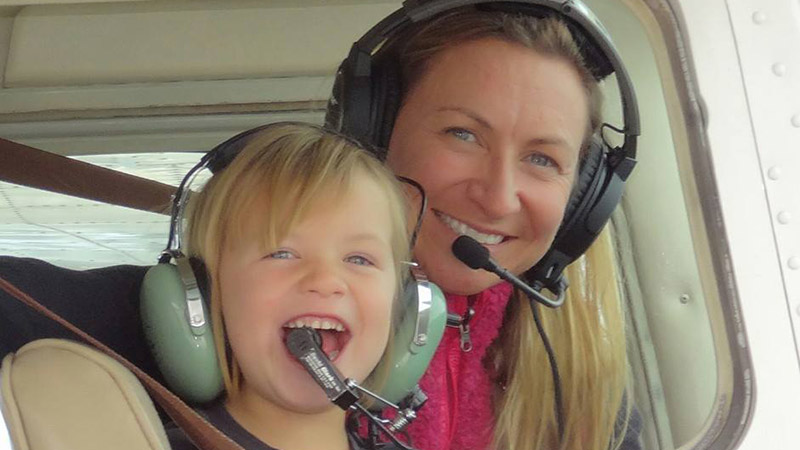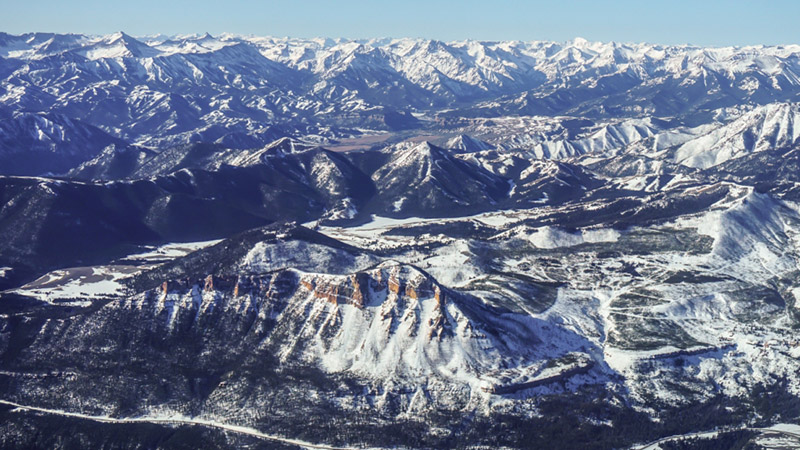
Buffalo Bill and Williams Jennings Bryant stayed at the Pollard Hotel, and the Sundance Kid robbed the Red Lodge Bank across the street.
But the mines started to close in the 1920s, and the town fell on hard times during the Depression. Today it has about 2,500 residents, no traffic lights, no stop signs on Main Street, and an airport with a 4,000-foot runway. It also has the Red Lodge Flying Club.
Founded in the early 1950s, the flying club, like the town, has had its ups and downs. But the future is looking promising.
 Until two years ago the club was divided—one group of pilots was able to fly a Cessna 172 and another group of pilots could fly the club’s Cessna 182. However, pilots did not have privileges to fly the other aircraft.
Until two years ago the club was divided—one group of pilots was able to fly a Cessna 172 and another group of pilots could fly the club’s Cessna 182. However, pilots did not have privileges to fly the other aircraft.
Management was centralized in that one person sent the bills out for both parts of the club on a quarterly basis. There were no aircraft reserves for maintenance and no effort to market the club to bring in new members. Less than 25 percent of the members were actively flying.
“When we started talking about merging, one of the board members, Brad Hauge, found that a really high percentage of clubs in the country provided access to all of their planes as long as you had the qualifications,” Club Manager Dick Nolan said. “That was a big factor in deciding to merge. That, and partly because of what we saw through AOPA, the members voted to merge.”
After the merger in August 2014, the club did a financial analysis and found the retail value of a merged membership was $2,800. Those who were formerly 182 members immediately got access to fly the 172 at no additional cost, and the former 172 members got access to the 182 with a check flight, but had to pay an additional fee of $1,300.
The price at which memberships sell has always been negotiable between seller and buyer. In the past couple of years the club has sold four memberships. Two negotiated a price for the non-merged 172 membership of about $1,000 and then the buyer agreed to pay the $1,300 upgrade fee. If necessary, the club is willing to work with new members to develop a monthly payment plan for the upgrade fee.
Currently there are five memberships that are for sale. Three that have not upgraded to the full membership and two that have upgraded.
When Dick gets a prospective member, he sends an email with a list of members that want to sell and includes those members on the email so the buyer is able to contact any of the sellers.
Once there is a sale agreement, Dick sends a questionnaire to the prospective new member to get basic information such as how much time the pilot has. The questionnaire is sent to the other two board members and they verbally approve or reject the member, although not until the old member closes out his account with whatever is due.
Today there are 28 members – 13 are full members with privileges to fly both aircraft, eight are members from the old 172 part of the club that have not yet upgraded, and seven students.
To encourage new students at an affordable cost, students pay a refundable $200 membership fee that gives them the ability to take lessons in the 172. If they choose to stop they can get refunded. Once they solo, they are charged another $200. The $400 paid up to that point becomes non-refundable but is credited toward the cost of a full membership once the student earns their certificate.
“It gets back to the financial risk people face in deciding whether or not they want to fly,” Dick said. “If you’re asking for $2,800 for a full membership for someone who might quit after four or five hours in the air, it’s just counterproductive.”
The club also raised dues from $45 a month to $55 and started billing monthly, since it is less of a financial burden to pay a smaller amount each month than a large amount every three months. The additional funds are being used to repay a $20,000 loan that was taken out to replace the engine on the 182 and then will go toward building an engine reserve for the 172 and for new avionics to meet the ADS-B requirement in 2020.
 Creative Marketing
Creative MarketingAs the club reorganized, the first thing it did for outreach was create a web site and then a Facebook page. The web site provides basic information about the club and doesn’t change much.
The Facebook page is more dynamic with the ability to update quickly. It has important club documents posted for easy access. For instance, members can find a copy of the club insurance policy, “how to” guides for the avionics or for scheduling an aircraft, and quarterly newsletters, just to name some of the documents available.
“The down side is a lot of our members are not into Facebook,” Dick said. “The ones that are, I encourage to post.”
But the most successful outreach has been magnetic signs on the side of cars. Dick got the idea from seeing signs mostly for general contractors. “Initially I printed up posters and put them up on local bulletin boards. Then I turned the poster into a magnetic sign, and for members that are willing to put them on their vehicles, I ordered them a set for $65 a piece.”
With his latest order, there will be five cars promoting the club with the signs. He provides members with an information sheet to keep in their car so when people ask about the club they can provide the literature with contact information.
“I encourage members who want to sell to put these signs on their vehicle so they can attract questions,” Dick said. “One guy who has his membership up for sale did that up in Billings. The new members who have got them are more enthusiastic about turning the club into more than it is right now because of the camaraderie.”
As the club grows, Dick wants to start doing fly outs to build the sense of community and to really enjoy the gift of flight, particularly in such a beautiful part of the country. He enjoys flying in the wintertime when aircraft performance is better and the mountains are snow covered. “It’s absolutely gorgeous,” he said.
The scenery isn’t the only compelling reason to fly—it’s also a more practical way to travel in the state. “I can get pretty much anywhere in Montana in three hours where driving would be eight or nine,” Dick said. He and his wife make the hour and half flight to Helena to stay at their favorite bed and breakfast on a regular basis. By car the trip would take more than four hours. And getting to Jackson Hole, Wyoming, is a little more than an hour flight, but by car is anywhere from five to seven hours depending on whether Yellowstone Park is open and allowing traffic to drive through.
Dick posts photos of his trips on the club’s Facebook page to encourage other members to use the aircraft in a similar fashion. “I’ve got a couple of new members that look like they are more likely to do that and I encourage them to post it,” Dick said. “It’s the sort of thing I want to encourage because it gives purpose to flying other than just going up and doing your touch and goes to stay reasonably current.”
 Since the club restructured, nearly half of the members are actively flying, which is up from just 25 percent a couple years ago. And Dick hopes that number will continue to climb as more students join the club and earn their certificates.
Since the club restructured, nearly half of the members are actively flying, which is up from just 25 percent a couple years ago. And Dick hopes that number will continue to climb as more students join the club and earn their certificates.
“The last several years have had a big focus on finding pilots in the area to replace those who no longer really use the club,” Dick said. “The appropriate analogy for the Red Lodge club is the phoenix rising from the ashes.”
Name |
Red Lodge Flying Club |
| Location | Red Lodge Airport (KRED), Red Lodge, MT |
| Website | http://www.redlodgeflying.com |
| Year formed | 1953 |
| Aircraft | 1976 Cessna 172M Skyhawk ($95/hr) 1980 Cessna 182Q Skylane ($115//hr) Rates are Hobbs time, wet. |
| Joining fee | $2,800 – Full Member $200 – Student member (refundable until you solo. After solo, students pay another $200 and the $400 is nonrefundable but is credited toward a full membership) |
| Monthly dues | $55 per month |
| Membership | 28 |
| Scheduler | Google Calendar |